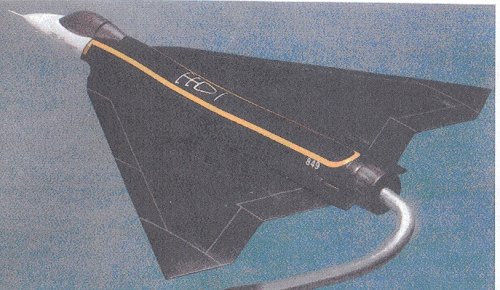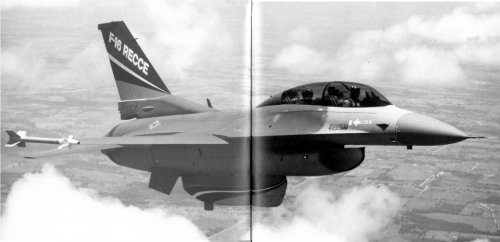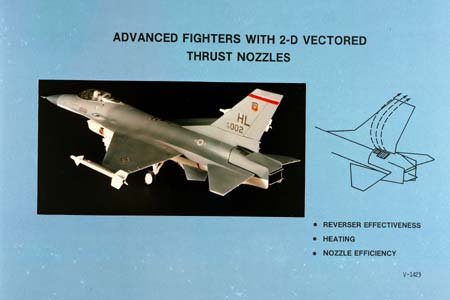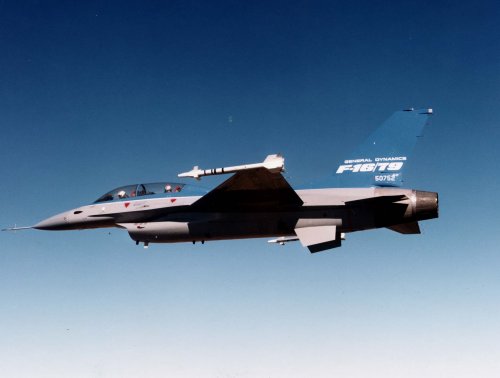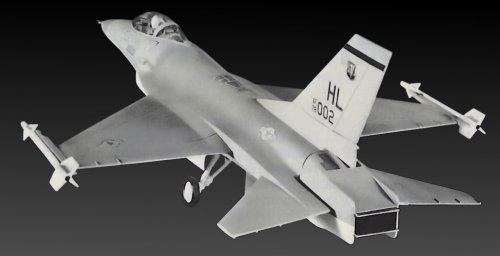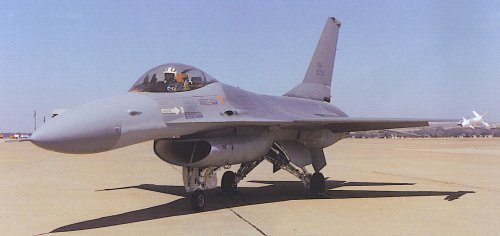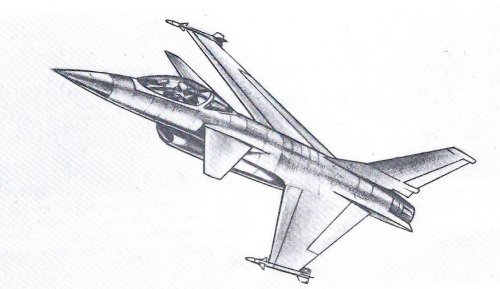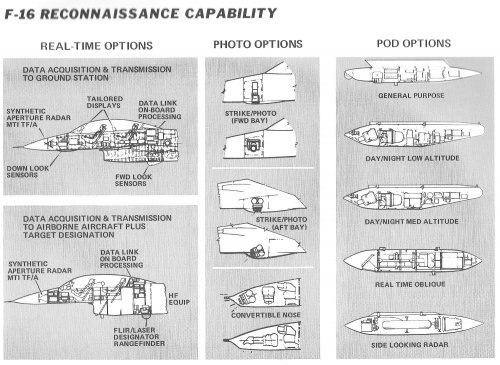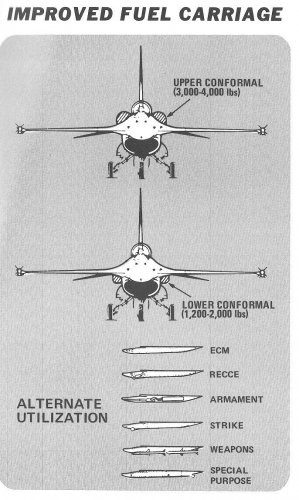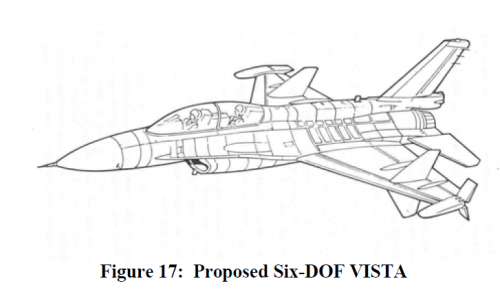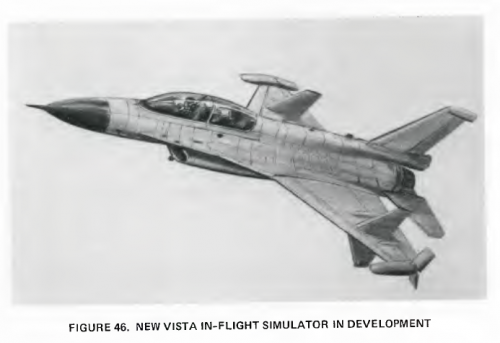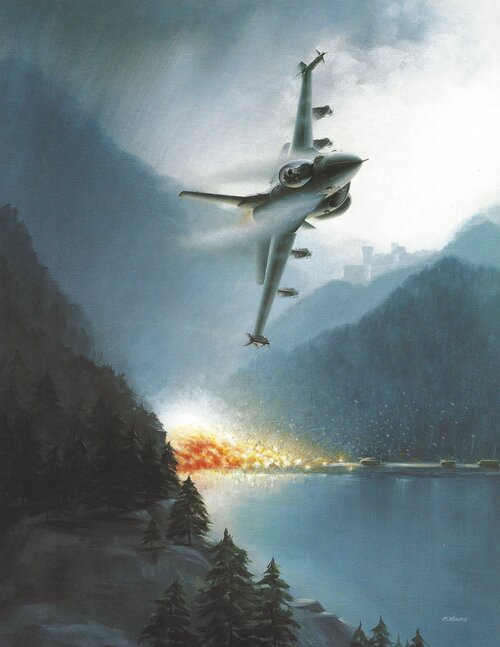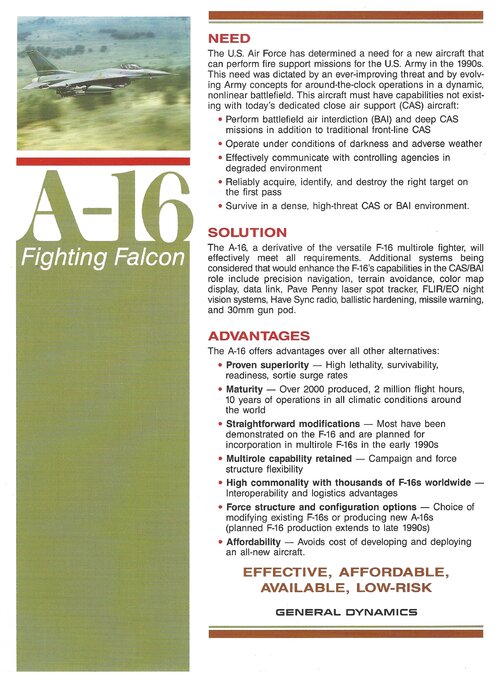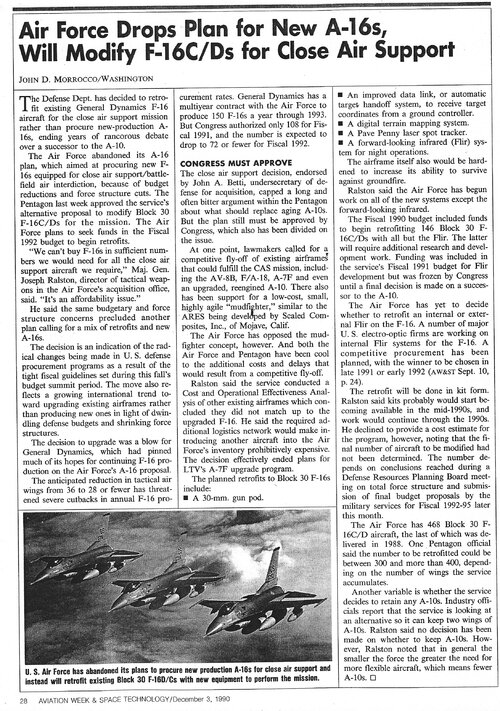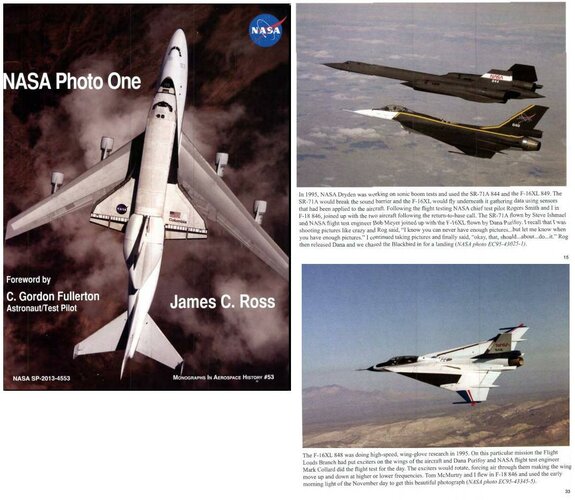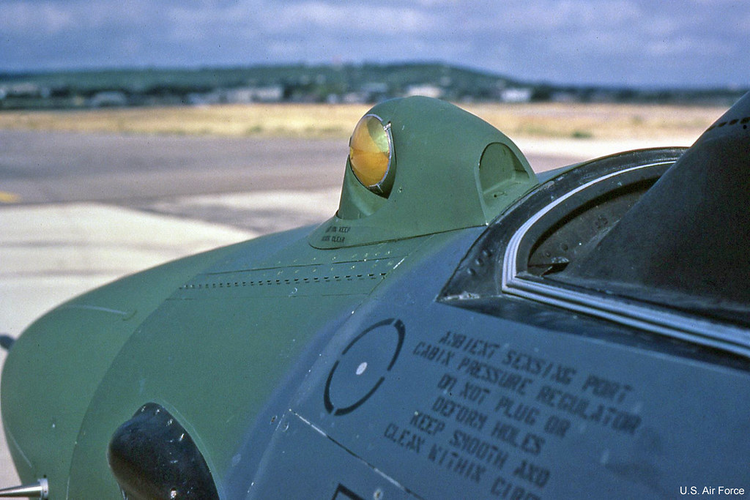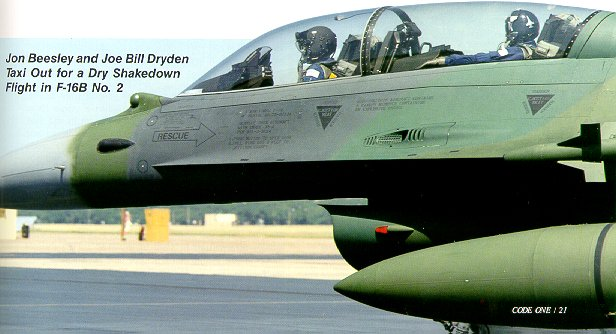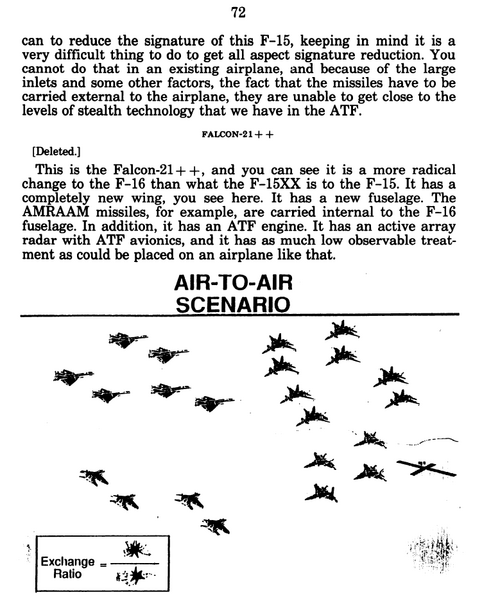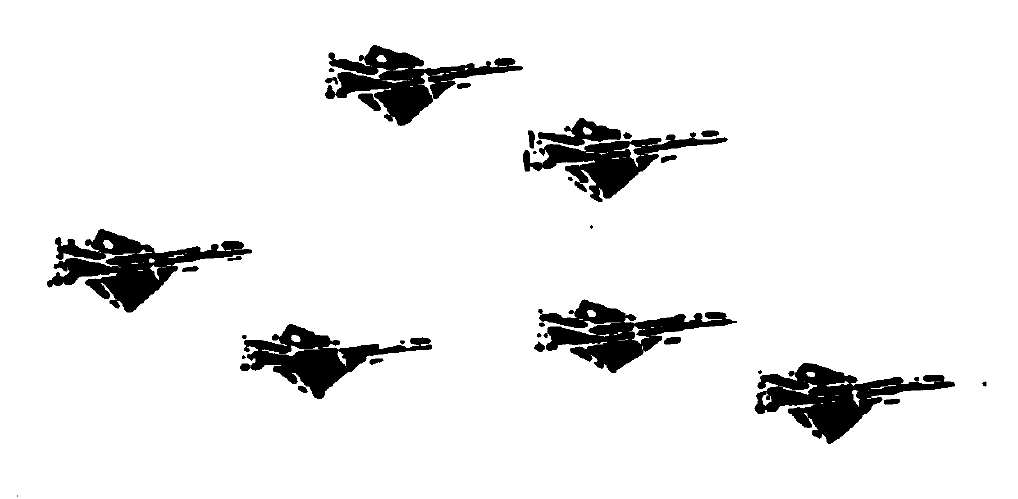You are using an out of date browser. It may not display this or other websites correctly.
You should upgrade or use an alternative browser.
You should upgrade or use an alternative browser.
Unbuilt F-16 based projects
- Thread starter Justo Miranda
- Start date
-
- Tags
- anti-tank cold war fuerza aérea mexicana imperial iranian air force nasa dryden flight research center north atlantic treaty organisation österreichische luftstreitkräfte royal australian air force royal saudi air force sead strategic reconnaissance tactical reconnaissance united arab emirates air force united states united states air force
- Joined
- 2 August 2006
- Messages
- 3,256
- Reaction score
- 1,529
Aviation Week is the most likely source, as that's where I've seen that picture. Go back and check my thread on tail-less fighters/aircraft I posted over a year ago; I'm not sure if I had that picture in that thread, but I know some of the other pics I had from the same story are there.
Matej
Multiuniversal creator
It's F-16X. During the 90s, there was a proposal to modify one of NASA's F-16XL to F-16X variant and if it be successful, than to start the serial production sometime in 2010. The lack of money and JSF program killed this effort.
- Joined
- 22 January 2006
- Messages
- 4,216
- Reaction score
- 2,018
I've been doing some research and we have a topic about F-16 origins but nothing about its development.
Let's start with a pic I found of an F-16 with a General Dynamics developed recce pod.
Source: Pg 134. Supersonic Fighter Development. Roy Braybrook. Ed Haynes. 1987 ISBN 0-85429-582-8
RF-16 and F-16 recce pods are described on GD F-16 Fighting Falcon. Aerograph I. Jay Miller. 1982. ISBN 0-942548-01-9. But the photo attached here is not included.
Let's start with a pic I found of an F-16 with a General Dynamics developed recce pod.
Source: Pg 134. Supersonic Fighter Development. Roy Braybrook. Ed Haynes. 1987 ISBN 0-85429-582-8
RF-16 and F-16 recce pods are described on GD F-16 Fighting Falcon. Aerograph I. Jay Miller. 1982. ISBN 0-942548-01-9. But the photo attached here is not included.
Attachments
Matej
Multiuniversal creator
Seems to be a nice photo of that model: http://www.nationalmuseum.af.mil/shared/media/photodb/photos/060905-F-1234S-040.jpg
...but I cant open it, probably because its again .mil URL. Can somebody try and if it works, attach it here? Thanks.
...but I cant open it, probably because its again .mil URL. Can somebody try and if it works, attach it here? Thanks.
Matej
Multiuniversal creator
Thank you.
Matej
Multiuniversal creator
Matej
Multiuniversal creator
- Joined
- 22 January 2006
- Messages
- 4,216
- Reaction score
- 2,018
From Aerograph I by Jay Miller
page 100
F-16A/"Big Nose": completed in mock-up form only. Study conducted to explore the feasibility of installing more powerful APG-65 radar system or 40" focal lenght HIAC camera. No external changes other than those.
page 100
F-16A/"Big Nose": completed in mock-up form only. Study conducted to explore the feasibility of installing more powerful APG-65 radar system or 40" focal lenght HIAC camera. No external changes other than those.
- Joined
- 1 May 2007
- Messages
- 2,596
- Reaction score
- 1,966
F-16A/"Big Nose"
reminds me of the "Big Nose" Convair B-58 Hustler, used to test the GAR-9 missile system, there,s a picture on page 98 of the Aerofax book...
cheers,
Robin.
- Joined
- 3 June 2006
- Messages
- 3,094
- Reaction score
- 3,966
That particular F-16 "75-0750" was modified a lot...pometablava said:From Aerograph 1 GD F-16 by Jay Miller
page 100
F-16A/"Big Nose": completed in mock-up form only. Study conducted to explore the feasibility of installing more powerful APG-65 radar system or 40" focal length HIAC camera. No external changes other than those.
Link: http://www.f-16.net/aircraft-database/F-16/airframe-profile/8
Matej
Multiuniversal creator
Wow! Its AFTI!
- Joined
- 6 September 2006
- Messages
- 4,838
- Reaction score
- 9,476
Bill Gunston thought the F-16X would have wing derived from the F-22, the fuselage would be stretched with improved weapons and avionics (he didn't say based on F22 or JSF but presumably so given its post-2010 likely entry date) and 80% more fuel.
Source: 'Lockheed Aircraft Cutaways' Osprey Publishing 1998
Source: 'Lockheed Aircraft Cutaways' Osprey Publishing 1998
- Joined
- 29 January 2008
- Messages
- 916
- Reaction score
- 2,055
The underwing pod size is a limiter though as shown, as it shows an external missile mount like the F-15 FAST packs. Something with folding fins would allow an internal carriage pod in the same vein as the F-15 Silent Eagle FAST packs. The conformal gunpod variant is interesting though. Something more like that F-4 in Vietnam with the triple gunpods (Chico the Gunlinger)? Today I doubt there would be much of a case for it, just as the heavy attack centerline gunpod was eventually ignored due to poor utility and lack of software. But if that sandia reasearch for .50cal laser guided bullets pans out, a sniping conformal gunpod of sorts, separate from the normal inbuilt gun, might have legs if combined with a laser designator like a Sniper XL pod hanging off the inlet. Though a system like that would have more utility as a conventional hanging gunpod with a built in laser designator ball turret stuffed in under the muzzle.
- Joined
- 26 May 2006
- Messages
- 34,916
- Reaction score
- 15,790
- Joined
- 26 May 2006
- Messages
- 34,916
- Reaction score
- 15,790
hesham said:here is the General Dynamics F-16 Six-DOF VISTA;
https://engineering.purdue.edu/~andrisan/Courses/AAE490A_S2007/Buffer/Calspan%20VSS%20Airrcraft/IFS_History_AIAA%20Paper_Calspan.pdf
Also;
https://apps.dtic.mil/dtic/tr/fulltext/u2/a185224.pdf
Attachments
jsport
what do you know about surfing Major? you're from-
- Joined
- 27 July 2011
- Messages
- 7,733
- Reaction score
- 5,754
The 70s/72s to be built in the next 10yrs could use the larger AESA and AESA SLAR (MTI EW Cyber etc) pod +AFTI/Automated Maneuver Attack System (AMAS) mods to introduce a hela JSTARS Gunslinger for CAS/BAI against distributed threats.From Aerograph I by Jay Miller
page 100
F-16A/"Big Nose": completed in mock-up form only. Study conducted to explore the feasibility of installing more powerful APG-65 radar system or 40" focal lenght HIAC camera. No external changes other than those.
jsport
what do you know about surfing Major? you're from-
- Joined
- 27 July 2011
- Messages
- 7,733
- Reaction score
- 5,754
The 70s/72s to be built in the next 10yrs could use the larger AESA and AESA SLAR (MTI EW Cyber etc) pod +AFTI/Automated Maneuver Attack System (AMAS) mods to introduce a hela JSTARS Gunslinger for CAS/BAI against distributed threats.From Aerograph I by Jay Miller
page 100
F-16A/"Big Nose": completed in mock-up form only. Study conducted to explore the feasibility of installing more powerful APG-65 radar system or 40" focal lenght HIAC camera. No external changes other than those.
The 1984 Phase II testing started with a dummy, then an operational FLIR mounted in the wing root. Standard F-16C avionics were fitted, and the Automated Maneuvering Attack System was installed. During Phase II testing, which lasted until 1987, the AMAS enabled the AFTI/F-16 to translate in all three axes at a constant angle of attack and to be pointed up to six degrees off the flight vector.
The digital flight control system gave the pilot a new freedom in maneuvering, making it possible to assume unorthodox flight attitudes, using nose pointing, direct force translation, and other unconventional means of maneuvering. The aircraft was also used to test and evaluate a variety of single-place cockpit layouts and systems. Pilots evaluated heads-up and head-down displays, voice interaction command systems, synthesized speech voice warnings, and touch-sensitive display screens. This aircraft also tried out products from the Air Force Microcomputer Applications of Graphics and Interactive Communications (MAGIC) project, which studies pictorial formats for situation displays in all three axes.
During the following years, the AFTI/F-16 became associated with Close Air Support (CAS) studies, some of them conducted by NASA. These studies were in support of the proposed A-16 or other future close air support/battlefield air interdiction aircraft. The AFTI/F-16 was upgraded with an F-16C block 25 wing and with block 40 F-16C features such as APG-68 radar and a LANTIRN interface. It went through a five-phase CAS evaluation program over 1988-1991, testing such low-level battlefield interdiction techniques as automatic target handoff-systems (in which target data was transferred from ground stations or from other aircraft to the AFTI/F-16), the Pave Penny laser-designator pod, off-axis weapons launch techniques, and various digital systems.
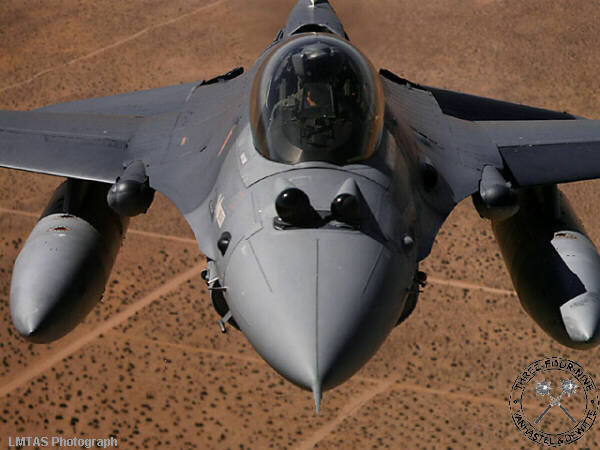
- Joined
- 21 May 2006
- Messages
- 3,002
- Reaction score
- 2,281
Would love to see a profile drawing/picture of this F-16 radome arrangement!What sort of radome is this?
Regards
Pioneer
jsport
what do you know about surfing Major? you're from-
- Joined
- 27 July 2011
- Messages
- 7,733
- Reaction score
- 5,754
jsport
what do you know about surfing Major? you're from-
- Joined
- 27 July 2011
- Messages
- 7,733
- Reaction score
- 5,754
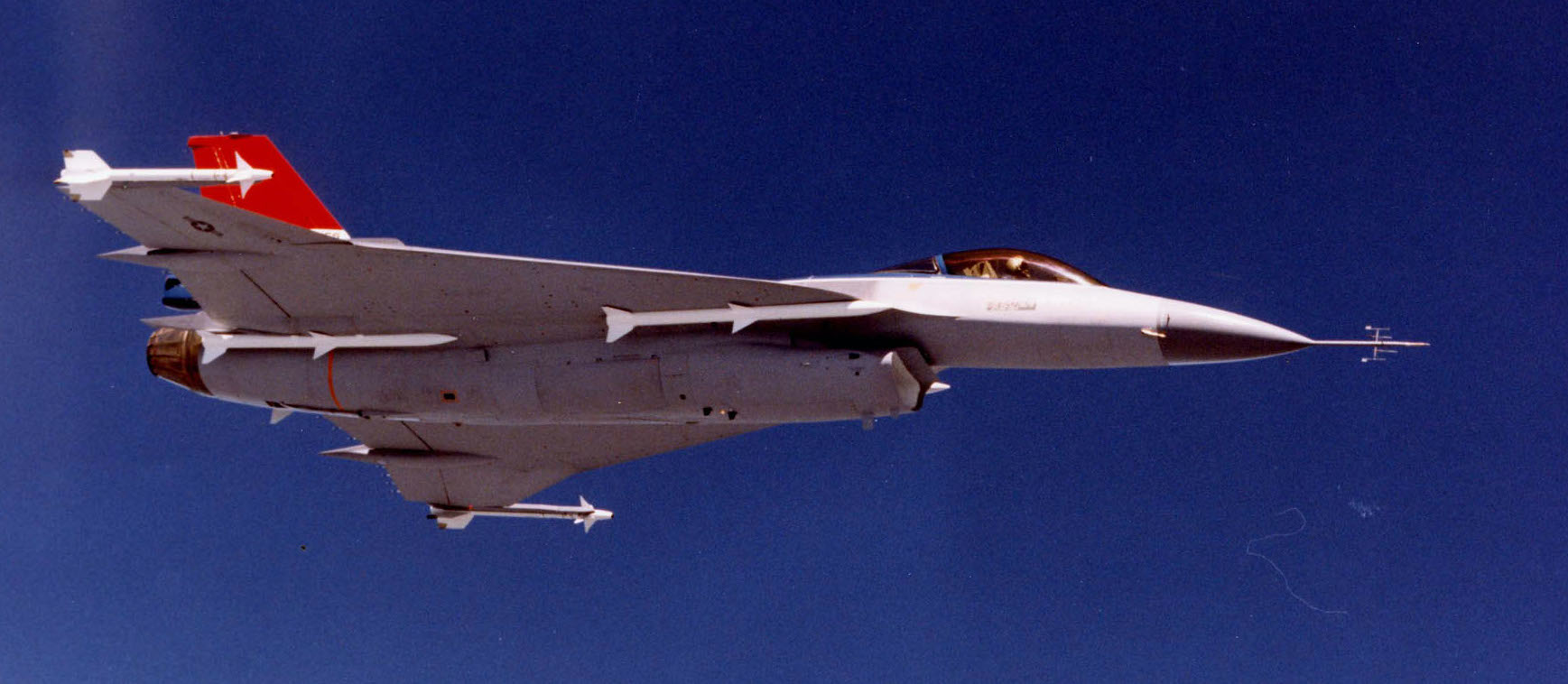
F-16XL: Why America didn’t get the best F-16 - Sandboxx
For more than forty years, the F-16 Fighting Falcon has served as the backbone of the U.S. Air Force's fighter fleet, but one year before the first F-16 entered service, the team behind its development had already developed a better F-16, in the F-16XL. The fighter was so capable, in fact, that...
 www.sandboxx.us
www.sandboxx.us
jsport
what do you know about surfing Major? you're from-
- Joined
- 27 July 2011
- Messages
- 7,733
- Reaction score
- 5,754
a hardened super structure is something a new 5+g fighter should include also for low altitude infil/exfil BAI/CAS. .Modern materials should make this accomplishable.
isayyo2
Lurker alert
- Joined
- 24 November 2011
- Messages
- 1,131
- Reaction score
- 2,331
I wonder if they were higher thrust TF34s or a different engine entirely? Like the F404 or RB199 powered concepts....even an upgraded, reengined A-10.
- Joined
- 8 January 2006
- Messages
- 1,612
- Reaction score
- 762
Military versions of later CF34s perhaps. GE has developed the engine beyond what the USAF flies.I wonder if they were higher thrust TF34s or a different engine entirely? Like the F404 or RB199 powered concepts....even an upgraded, reengined A-10.
- Joined
- 16 April 2008
- Messages
- 9,609
- Reaction score
- 14,513
Military versions of later CF34s perhaps. GE has developed the engine beyond what the USAF flies.I wonder if they were higher thrust TF34s or a different engine entirely? Like the F404 or RB199 powered concepts....even an upgraded, reengined A-10.
This was later, but a couple of improved TF34 versions are mentioned in the 2003 timeframe.
isayyo2
Lurker alert
- Joined
- 24 November 2011
- Messages
- 1,131
- Reaction score
- 2,331
While not an F-16 variant, the Multiple Stores Ejector Rack (MSER) program was developed exclusively for the aircraft. MSER was supposed to replace the existing multiple and triple ejector rack in Air Force inventory by being more rigid in flight and ejecting ordnance downwards, rather than at a slant. During flight testing MSER exhibited notable oscillation and vibration at higher speeds; with costs spiraling out of control, MSER was cancelled in the middle 80s.
 apps.dtic.mil
apps.dtic.mil
Further info on F-16 net: https://www.f-16.net/forum/viewtopic.php?t=3838


Defense Technical Information Center
The Air Force plans to award a contract in June 1982 for the continued development of an aircraft bomb carrier known as the Multiple Stores Ejector Rack MSER. The rack, in development since 1976, was intended for use by certain Navy aircraft as well as several aircraft operated by the Air Force. However, we have found that service interest in a common bomb rack has dwindled and both the Air Force and the Navy are pursuing separate bomb rack developments some MSER development goals may not be achieved and other alternatives to MSER have not been fully evaluated in addition, MSERs estimated development costs have tripled and average unit procurement costs could not be 14 times greater than the cost of the racks now in service and the development period has more than doubled. The Air Force has basically reduced it MSER requirements to one aircraft, the F-16, and the Navy has all but pulled out of the program. Before authorizing further expenditure of funds for MSER, GAO recommends that the Air Force and Navy Secretaries be required to determine whether a common bomb rack is still needed, whether MSER will meet Air Force and Navy requirements, and whether it is cost effective.
Further info on F-16 net: https://www.f-16.net/forum/viewtopic.php?t=3838
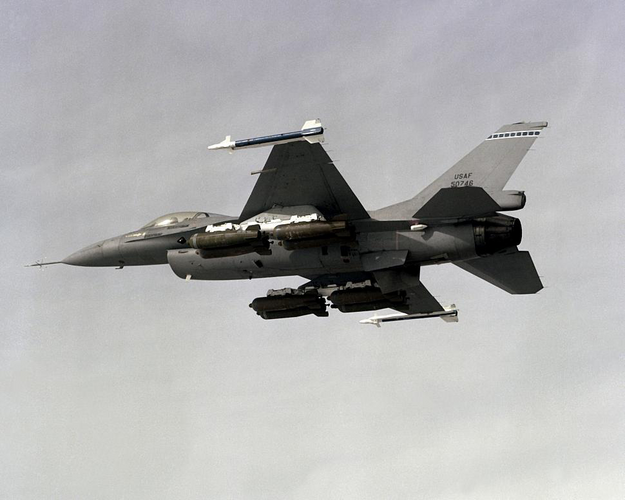
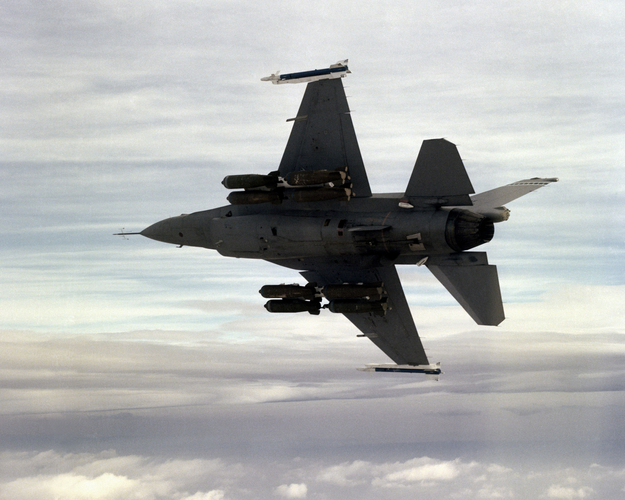
- Joined
- 9 October 2009
- Messages
- 21,979
- Reaction score
- 13,640
View: https://www.reddit.com/r/WeirdWings/comments/y2akk9/f16_gear_door_sparrow_pylons/

level 1
LurpyGeek
OP·2 hr. ago
The F-16 originally wasn't developed to carry a BVR missile since it was conceived as a lightweight, daytime dogfighter. During the development stage, considerations for expanded roles were made and tests were done to see if the fighter was adaptable for a BVR capability.
Testing was done to mount, carry and launch AIM-7F Sparrows from the main landing gear doors.
Another image HERE
Low quality 1977 Video (Gear Door Operation at 2:40)
F-2
ACCESS: Top Secret
- Joined
- 22 May 2020
- Messages
- 887
- Reaction score
- 1,725
Helmet Mounted Display Model :: Rochester Avionic Archives
I think this is the helmet pictured
- Joined
- 3 June 2011
- Messages
- 18,342
- Reaction score
- 12,247
View: https://www.reddit.com/r/WeirdWings/comments/y2akk9/f16_gear_door_sparrow_pylons/

level 1
LurpyGeek
OP·2 hr. ago
The F-16 originally wasn't developed to carry a BVR missile since it was conceived as a lightweight, daytime dogfighter. During the development stage, considerations for expanded roles were made and tests were done to see if the fighter was adaptable for a BVR capability.
Testing was done to mount, carry and launch AIM-7F Sparrows from the main landing gear doors.
Another image HERE
Low quality 1977 Video (Gear Door Operation at 2:40)
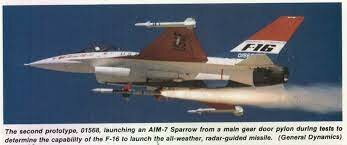
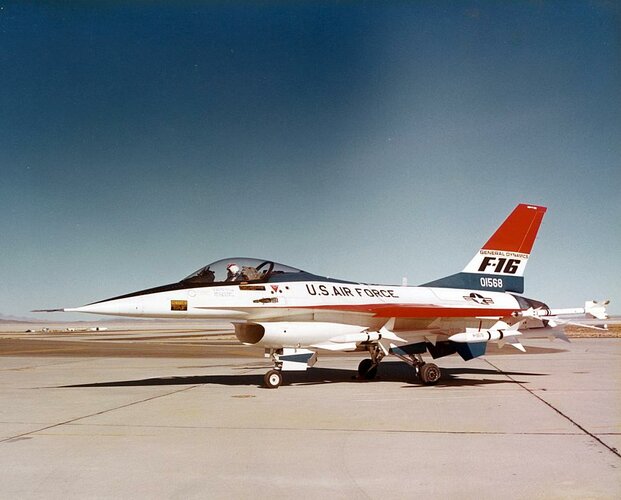
Similar threads
-
Strategic Air Command in the UK - Robert S. Hopkins III
- Started by CJGibson
- Replies: 2
-
EC-121 Proliferation?
- Started by Rule of cool
- Replies: 41
-
Lockheed CL-1200 / X-27 Lancer
- Started by overscan (PaulMM)
- Replies: 84
-

